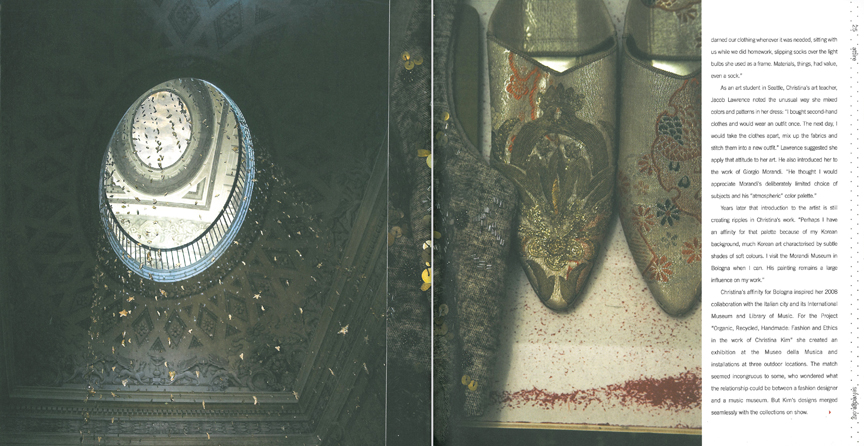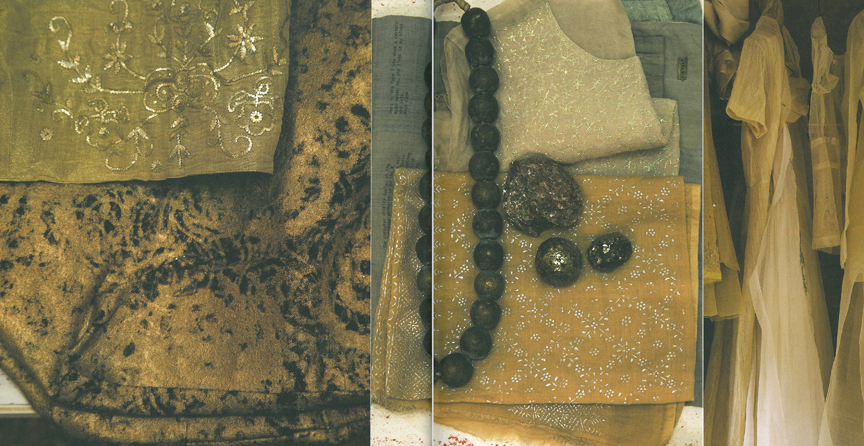Selvedge
Selvedge
A Modest Proposal: Christina Kim Makes the Most of Things
December 2010
It's the thought that counts. At this time of year buying gifts is almost inevitable and most of us put plenty of thought into what we give to others. We realise that a gift represents us, and reveals what we think of the recipient but a gift has further layers of meaning.
An object is also an experience. It carries the experience of the maker: if you made the gift yourself then you are giving your own time and affection, as well as the present—that's what makes a homemade gift so special. What about the things we buy? Sometimes we forget that a purchased object also carries the experience of the person who made and designed it. In the frenzy of seasonal shopping we can overlook the fact that, factory or artisan produced, everything we give is an expression of someone's history, skill and time.
Christina Kim tries not to overlook that. The Korean-American designer made an early decision to design consciously: to be aware of the environment, to take pleasure in restraint and enjoy her natural, perhaps cultural, preference for clothes, objects and decorations that visibly express the experience of the maker.
Christina integrates recycled and organic materials and traditional, often regional, techniques into desirable modern garments with a light touch. There is a sense of purpose in her dosa fashion collections but no air of 'preaching'. It's an ease born of a long association with craftsmanship. "I remember looking at my grandmother's traditional Korean socks with fondness and amazement as a girl of around four. The soles were patched with pieces of cotton cloth clipped from our bedding; I was intrigued by the way the different shades of white overlapped. My grandmother darned our clothing whenever it was needed, sitting with us while we did our homework, slipping socks over the light bulbs she used as a frame. Materials, things, had value, even a sock."
As an art student in Seattle, Christina's art teacher, Jacob Lawrence noted the unusual way she mixed colors and patterns in her dress: "I bought second-hand clothes and would wear an outfit once. The next day, I would take the clothes apart, mix up the fabrics and stitch them into a new outfit." Lawrence suggested she apply that attitude to her art. He also introduced her to the work of Giorgio Morandi. "He thought I would appreciate Morandi's deliberately limited choice of subjects and his "atmospheric" color palette."
Years later that introduction to the artist is still creating ripples in Christina's work. "Perhaps I have an affinity for that palette because of my Korean background, much Korean art characterized by subtle shades of soft colours. I visit the Morandi Museum in Bologna when I can. His painting remains a large influence on my work.
Christina's affinity for Bologna inspired her 2008 collaboration with the Italian city and its International Museum and Library of Music. For the Project "Organic, Recycled, Handmade: Fashion and Ethics in the work of Christina Kim" she created an exhibition at the Museo della Musica and installations at three outdoor locations. The match seemed incongruous to some, who wondered what the relationship could be between a fashion designer and a music museum. But Kim’s design merged seamlessly with the collection on show.
Golden rings of milagros (Spanish for miracle) were hung from the museum dome. These sequined hearts, moons and stars made from the smallest of recycled scraps by the Self Employed Women's Association in Ahmedabad, India, were strung like notes on a scale along 85 strands of wire in 20 meter lengths.
Elsewhere a delicate structure hanging from the upstairs entrance (playfully renamed 'phantom of the museum') was embroidered with instruments in gold, metaphorically making notes rise from the delicate muslin—almost a synesthesia. The embroidery, a technique called badla was hand stitched in Calcutta, India, and also appeared on garments in the museum.
This was two years ago and most of the installations have been removed. A handful of the kurtas, bali jackets and dresses – some in hand woven gold zari fabric, others with badla embroidery – are available in Christina's Los Angeles store, dosa818. In the Museo dell Musica the scrim banners with delicate images of instruments in gold metallic ribbon embroidery remain in situ, as do the milagros. And it is these tiny 'miracles' that encapsulate the work of Christina Kim.
On their own each sequined heart or star is just a small bundle of scraps but en masse (for this project 25 women were employed to make approximately 2,500 milagros) they have impact and longevity. They represent the small but persistent efforts of Christina and designers like her make a difference.
text: Beth Smith
photo: Mark Schooley, Jay Clendenin



